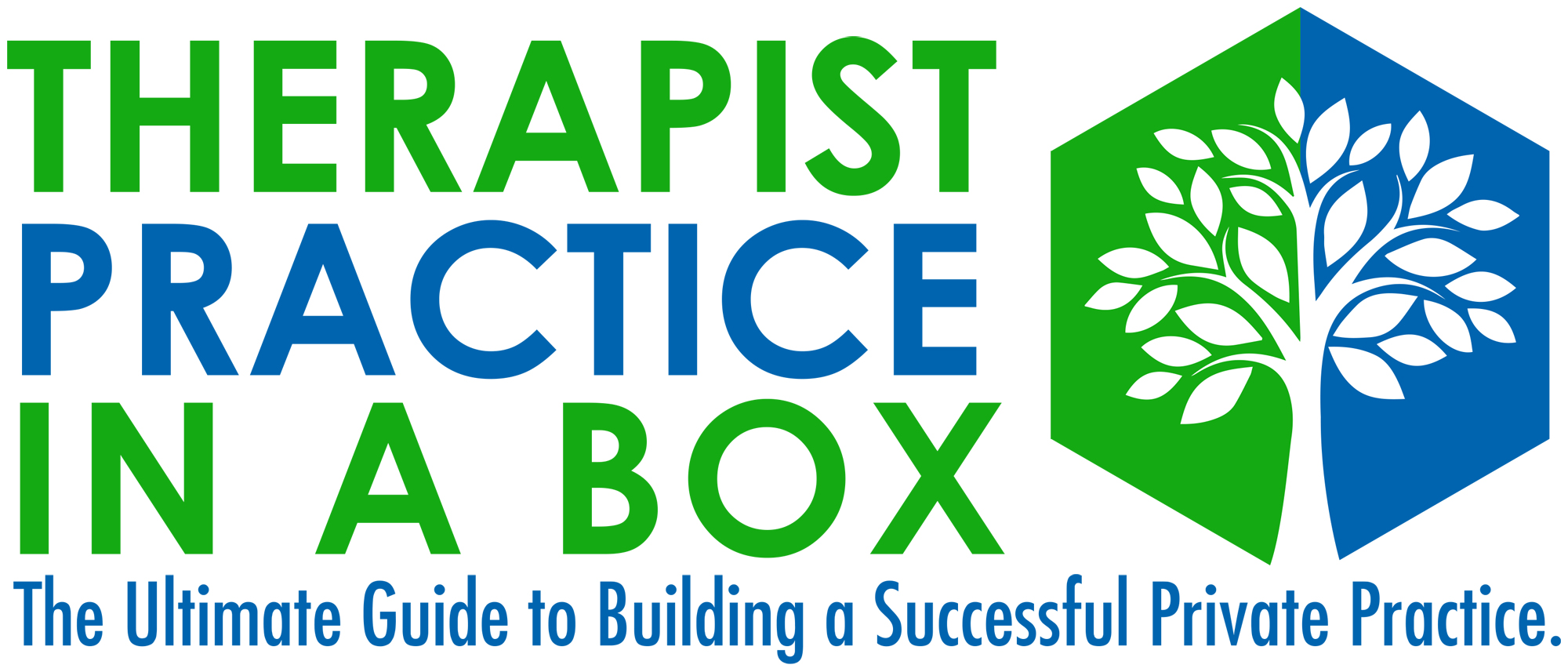Welcome back, this is the 3rd of 3 guest blog post from Joanne B. Kim, a San Jose, California pre-licensed marriage, and family therapist.
She has been highly successful in building a private practice within 10 months. Ms. Kim shares her keys to her success story with you below. One of the pillars of her fast success as you will read below is the use of practice building coaches. When I first started building my group practice there were we few practice building coaches. Therapists at that point “just figured it out” often making mistakes that cost time and larges amounts of money. General business often used coaches then and there now there is plenty of business books and research that touts the advantages of having a business building coach. Most graduate schools do not have any business classes and that puts therapists at a huge disadvantage in business building. Other professionals like physical therapists, chiropractors and even the football player of the NFL require business and financial classes.
The business coaches listed in Ms. Kim’s article all have great information and I professionally know Kelly and Miranda, Cassy Truffo and Jo Snaok. All three of the coaches have their own personal style and are wonderful leaders. When hiring a business coach it’s like hiring a therapist you must find the fit, understand what they can do for you and trust them in the process. Again, I would like to thank Ms. Kim for her detailed roadmap.
6 Steps to Build Your Practice NOW
By Joanne B. Kim, AMFT, guest blog
Here’s the roadmap of how I got here in ten months.
- Track your DATA.
- KNOW THYSELF.
- KNOW THY WHY.
- Find your SWEET SPOT.
- Find your TRIBE.
- Learn the BUSINESS.
Print this out and tape it onto the wall in front of your desk.
Step 1: Track your DATA (Key Performance Indicators)
In her book, “From Clinician to Confident CEO” (2015), Casey Truffo calls this the “CEO Dashboard,” “a real-time assessment of the key performance indicators (KPIs) of a business.” In therapist terms, it’s the intake and assessment process you do in your practice so that you can identify appropriate treatment goals, create treatment plans, and apply specific interventions.
The more you know about your clients, the better you can support them. Likewise, the more you know about your practice, the better you can improve it.
Action Item: On an Excel sheet (or paper), track the following information every month:
- Current clients, fee, session frequency
- Monthly client hours, revenue, average hourly fee
- Sliding scale brackets – How many full-fee clients? 85% fee? 70%?
- “Leads” – How many new potential clients? Referral source (word of mouth, Psychology Today, website)?
- “Conversions” – Who became actual clients? Why/not? Fee? Scheduled?
- Inactive clients – Why? Last contacted when?
- Termination – Why (completed goals or premature)?
Ask yourself:
- What’s working? How can I do more of that?
- What’s hurting? How can I address that?
This process can feel mundane (and sobering) the first time you do it, but this one thing alone helps you identify what to start improving right away.
Step 2: Know THYSELF (Your Emotional Health)
The best therapists know who they are and who they’re not. They’ve done their own personal work to enhance their security and manage their countertransference. The healthier we are emotionally, the healthier our practices will be.
Your practice reflects YOU, for better or for worse; like a major art project, the practice building process reflects both your glory and your mess. We wear our hearts on our websites, workshops, and networking for the whole world to see and critique. That’s why this process stirs up powerful, vulnerable emotions. Vulnerability hangover is a regular part of this process.
“I’m not scared to be seen; I make no apologies. THIS IS ME.” What would your life and practice look like if it were to be true?
Action Item: Find a great therapist to accompany you on this journey.
Step 3: Know Thy WHY (Your Vision)
Your graduate school gives you the bare minimum tools to help general clients. Postgraduate CEU trainings provide more advanced techniques. However, neither gives give you your VISION for what you want your practice to look like, who you want to serve and how. No one else can give you your vision – only YOU can fill that role.
If your vision is unclear, or if you’re doing busy work because everyone else seems to be doing it, you’re going to burn out. March to the beat of your own drum, not anyone else’s.
Fortunately, you can create your vision RIGHT NOW, BEFORE YOU GET YOUR LICENSE. You may have already gotten this vision even before you entered grad school. You had a dream, mission, calling that brought you into this field – to address a specific problem, to serve a particular population, to meet a certain need. Now’s a good time to sharpen that image.
Don’t worry, your vision may change as you yourself transform, but the heart of it will remain the same. This vision is going to be the fuel to carry you through this journey. FILL YOUR TANK. DON’T RUN ON EMPTY.
Action Item: Spend 30 minutes this week to DREAM. Write down what comes up:
- What words or phrases describe you?
- What brought you into this field?
- What would a perfect client week look like for you? Who would you work with? How?
- What would a perfect life look like for you?
Step 4: Find your SWEET SPOT (Your Ideal Client)
In baseball, the sweet spot is the point of the bat that, upon impact with the ball, requires the least energy input but maximizes the output. Your sweet spot is the where you do your best therapeutic work with the least cost in time, energy, and resources.
*Like your vision, it’s okay for your sweet spot to change over time!
Action Item: Write down a list of the most memorable clients, ones that stirred up the most emotions in you, both positive and negative.
- Which clients make you feel energized? Excited? Hopeful? At ease? What traits do they share? What topics are you good at or intrigue you (e.g., trauma, couples, eating disorders)? Write down whatever comes up – this is your sweet spot.
- Who makes you feel depleted? Bored? Frustrated? Hopeless? What traits do they share? What topics make you feel stuck or bored? This is not your sweet spot.
Step 5: Find Your TRIBE (Your Community)
Private practice building means you work hard to become a business owner, taking great risks, bootstrapping, and hustling to make ends meet. You are solo-preneur trailblazing through the wilderness in pursuit of the Promised Land. No one has trodden your path before you, and it can feel lonely.
Interestingly, by virtue of this shared forerunner experience, we are not alone, even in our loneliness. You and I share the same types of struggles that haunt even seasoned private practitioners.
Connect with other practice-building therapists either locally or online. Be each other’s safe haven; comfort and join together in times of need. Be each other’s secure base; empower each other to keep pushing forward. Beware of the naysayers who put out your fire because they’re threatened by your brightness. Avoid competition (lose-lose), pursue coopetition (win-win).
Action Item: Look up Facebook groups for therapists (“Therapists in Private Practice,” “MFTGuide,” and region-specific therapist groups are good places to start). If you want an intentional practice building community, look into Practice of the Practice’s Next Level Practice Cohort or ZynnyMe’s Business School Bootcamp.
Step 6: Learn the BUSINESS.
In “From Clinician to Confident CEO,” Casey Truffo lists five roles that all private practices need to thrive: Clinical, Operational, Financial, Marketing, and Visionary. The Clinical role is covered by your graduate school and ongoing trainings. The Visionary role is covered by Step #3 (KNOW THY WHY).
So, what about the Operational, Financial, and Marketing roles, which many therapists try to avoid? If you’re running your own business, there’s really no way around them – it comes with the territory.
This may seem daunting at first, but three roles are inherently Clinical and Visionary and thus also within your reach. In fact, if you’ve done Steps #1-5, you’ve already started doing Step #6 as well.
Operations:
Setting schedules, exchanging email or phone communications, and managing the facilities of your office is basically about boundaries, assertive communications, and hospitality, what you’ve already been doing in-session with your clients.
Action step: Track Your DATA (See Step #1) and make changes so that your operations is more effective/efficient according to who you are (Step #2: Know THYSELF), what you want your practice to look like (Step #3: Know Thy WHY), and who you work well with (Step #4: Find Your SWEET SPOT).
Finances:
Your(practice) needs to be healthy first so that you can do what you do for the long haul. If you excel in all other areas but can’t afford to keep your practice open, you won’t help anyone (but potentially put yourself and your ideal clients at risk).
Your own money messages, family-of-origin experiences, and countertransference issues show up in how/whether offer sliding scales, raise your rates, or charge your no-show/late cancellation fees. If you overly offer sliding scale without considering the long-term impact, you may find yourself working many more hours to make ends meet, making it harder for you to be fully present with your clients. This means your own personal stuff could spill into your clients’ work.
Aren’t you trying to help your client build solid self-esteem and healthy boundaries? How can you model for them what holistic health looks like, even in finances?
Action Item: Track Your Data (See Step #1) and read Casey Truffo’s book, “Become a Wealthy Therapist” or watch ZynnyMe’s free training webinars. Make a change in your fees and policies according to your vision (Step #3: Know Thy WHY).
Marketing:
The goal of marketing is to create a bridge between you and your ideal client. What good is it for you to be an excellent therapist in X, Y, or Z if no one knows you exist? If your clients can’t find you, you can’t serve them. It is our clinical imperative to make ourselves accessible and approachable to our (ideal) clients outside of our office as we do within sessions.
Despite what expectations or fears you may have about marketing (watch your self-talk!), the truth is, therapists make EXCELLENT marketers precisely because we deeply know our ideal clients – their pain, their strengths, their goals, their dreams. Therapists don’t like the idea of “selling” to clients because it feels “icky.” But if your services can really help your clients, would you deprive them of that because of your own discomfort? You have what they need; help them find you!
Be creative in your medium – coffee dates, Facebook/Instagram posts, workshops, and conversations in the break room are all fair game.
Action Item: Start with the low-hanging fruit and meet up with people you already have a great relationship with: colleagues, friends, family members, etc. (Step #5: Find Your TRIBE) and tell them who you love working with (Step #4: Find Your SWEET SPOT). Look into ZynnyMe’s Business School Bootcamp.
This is You
Private Practice is not for everyone. Each of the necessary roles – Clinical, Operations, Financial, Marketing, and Visionary – take time, resources, and energy to set up.
Fortunately, you don’t have to wait until licensure to build your practice. The minimum requirement is YOU – who you are, whom you love, how you work, and why. If you feel like you don’t know where to begin, go through Steps #1-6 in whatever order makes sense for you now.
- Track your DATA.
- Know THYSELF.
- Know Thy WHY.
- Find your SWEET SPOT.
- Find your TRIBE.
- Learn the BUSINESS.
Create more space to do what you really love to do – make a huge impact on the lives of your ideal clients, have balance and health in your professional and personal life, and set yourself up to make a great living, EVEN BEFORE LICENSURE. We who are in the private practice building realm – licensed or not – are in the same boat with you.
Again, I want to thank Joanne B. Kim for her excellent blogs from a pre-licensed perspective. Ms. Kim shared a wealth of information on setting the right foundation, mindset, and then 6 practical steps to get you started on practice building.

Joanne B. Kim, AMFT
www.OliveMeCounseling.com
Joanne is an Associate Marriage & Family Therapist in San Jose, CA. She helps adult survivors of emotional abuse/neglect and high-conflict couples – those who feel stuck, anxious, and frustrated in their significant relationships – create emotionally thriving relationships.
Blogs of Interest
The Sharpest Words that Cut us Down, Pre-licensed Angst by Joanne Kim, AMFT (2 of a 3 part series)
Out of the Pre-licensed Trenches: The Journey Begins by Joanne Kim, AMFT (1 of a 3 part series)
Private Practice Start-up Financial and Children By Carol Adkinsson, LMFT
Take That Leap Into Private Practice by Sherry Shockey-Pope, LMFT

